Every autumn, I fall in love with maitake mushrooms again.
Directly translated from Japanese as “dancing mushroom,” legend has it that maitake inspires so much delight in seekers that they dance with joy upon finding it. That joy could be from the shroom’s delicious flavor or mouthwatering market value, depending on who you ask.
Want to try your hand at foraging a few? Read on to discover how to identify maitake mushrooms and learn to distinguish them from common look-alikes in the field.
How to Identify Maitake Mushrooms
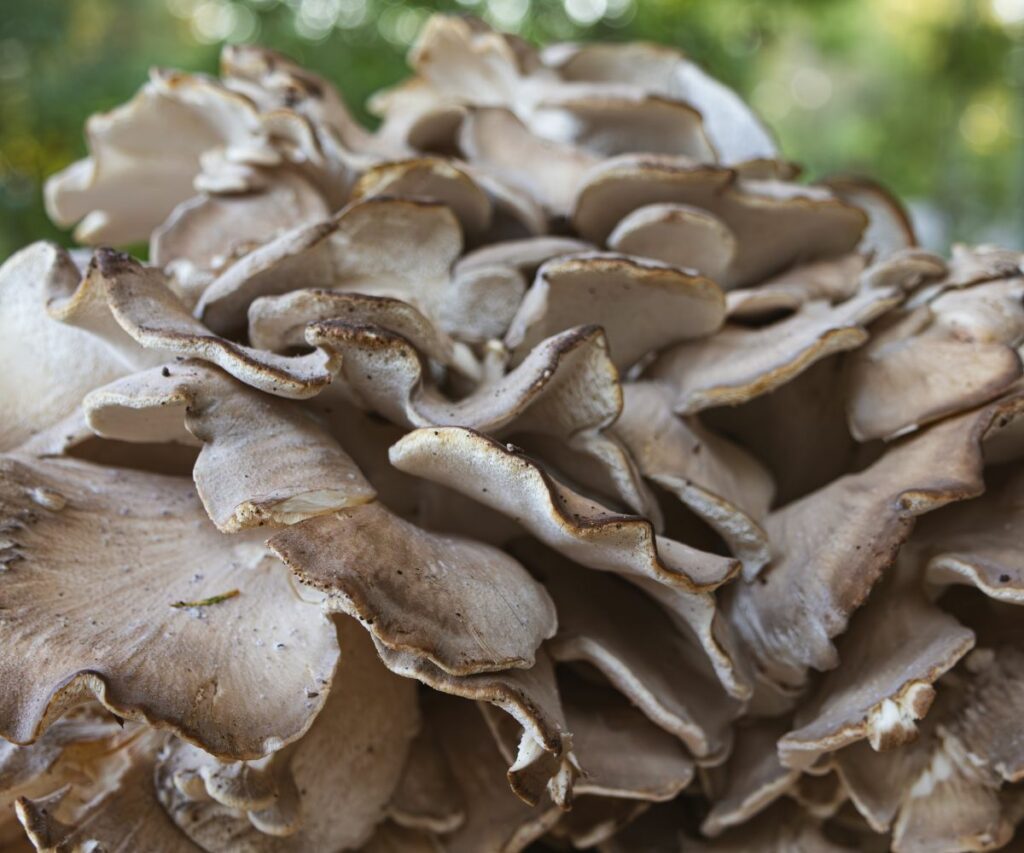
Known scientifically as Grifola frondosa, maitake mushrooms are also commonly called “hen of the woods” or “sheep’s head mushrooms.” No matter what name you prefer, they’re a safe and rewarding choice for fall foragers.
These fungi aren’t tricky to find once you’re privy to their growth habits, and making a positive ID is easy after you examine their appearance.
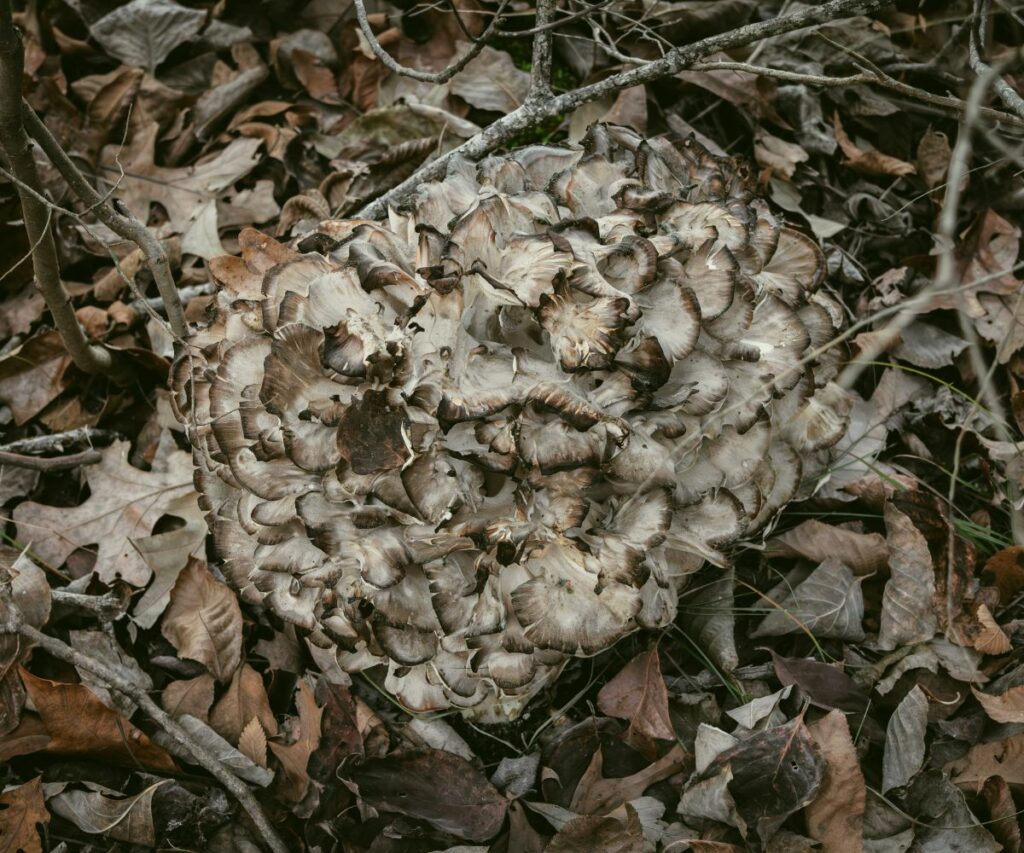
Appearance
The nickname “hen of the woods” derives from maitake’s supposed similarity to the tail feathers of a dull-colored laying chicken. Personally, I think this is stretching the imagination pretty far, especially since maitake mushrooms grow much larger than a chicken ever could.
While a cultivated store-bought maitake might span around six to eight inches, wild varieties grow between one and three feet. They can weigh between 10 and 30 pounds, so bring a sturdy foraging bag when you go hunting.
Once you spot a large, dull-colored polypore in the fall forest, examine the following features to make sure you’ve got a bona fide maitake on your hands:
- Cap: Maitake mushrooms have many individual frond-like caps sprouting from a base stump and radiating outward in a sphere or lopsided rosette. Caps dip downward at the edges in a spoon-like shape and may be beige, gray, brown, or even pinkish. Coloring may change from the tip to the base of the individual cap, resulting in multicolored caps. Colorations are concentric but not distinctly zonate; the colors fade and blend.
- Pore surface: The pore surface covers the underside of the cap and runs down the stem. Pores are small but not invisible to the naked eye. They are deep, jagged, and angular. The pore surface is grayish when very young but becomes white as the mushroom matures.
- Flesh: The flesh is white when cut. It is firm yet pliable and does not bruise.
- Stalk: The base stalk is usually covered by the caps and not immediately apparent. It is fibrous, tough, and white, with many individual branches supporting the multitude of caps.
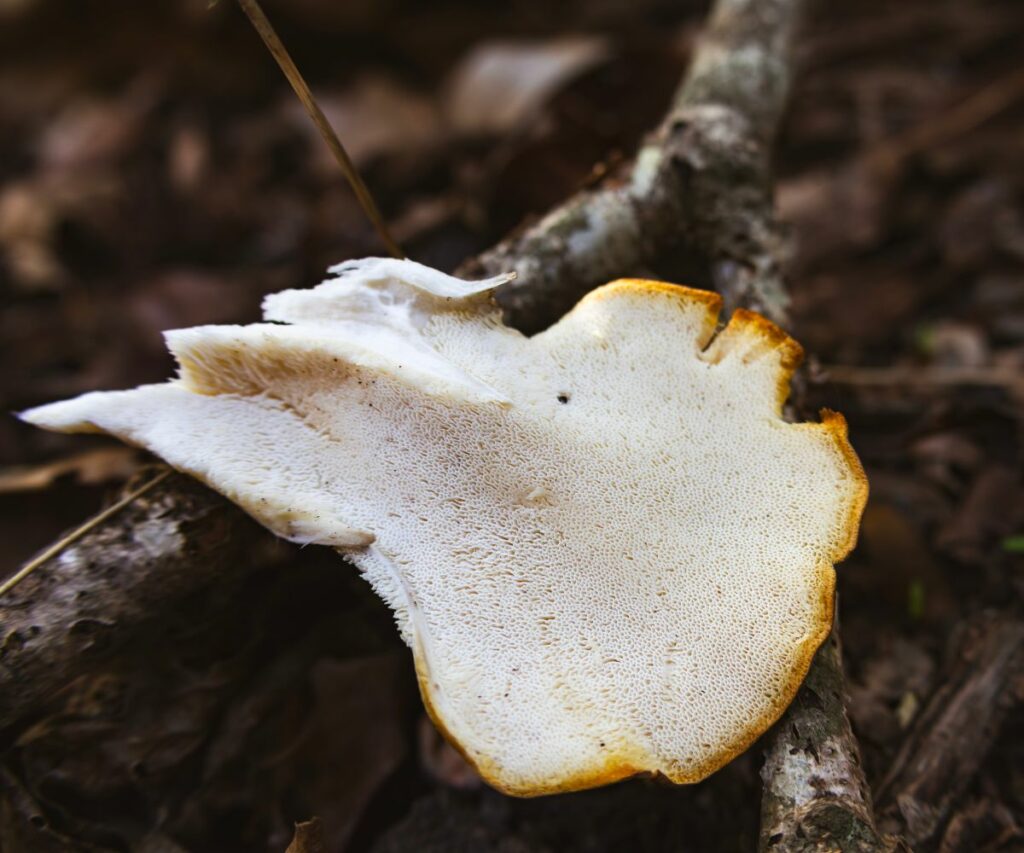
Texture, Taste, and Smell
At prime, maitake mushrooms are soft and tender. Like turkey tail mushrooms, caps may even feel slightly velvety. They have firm flesh that holds up well under pressure and will bend to your touch in the field. As specimens are allowed to mature past prime, they become chalky. Caps darken, become slimy, and rot.
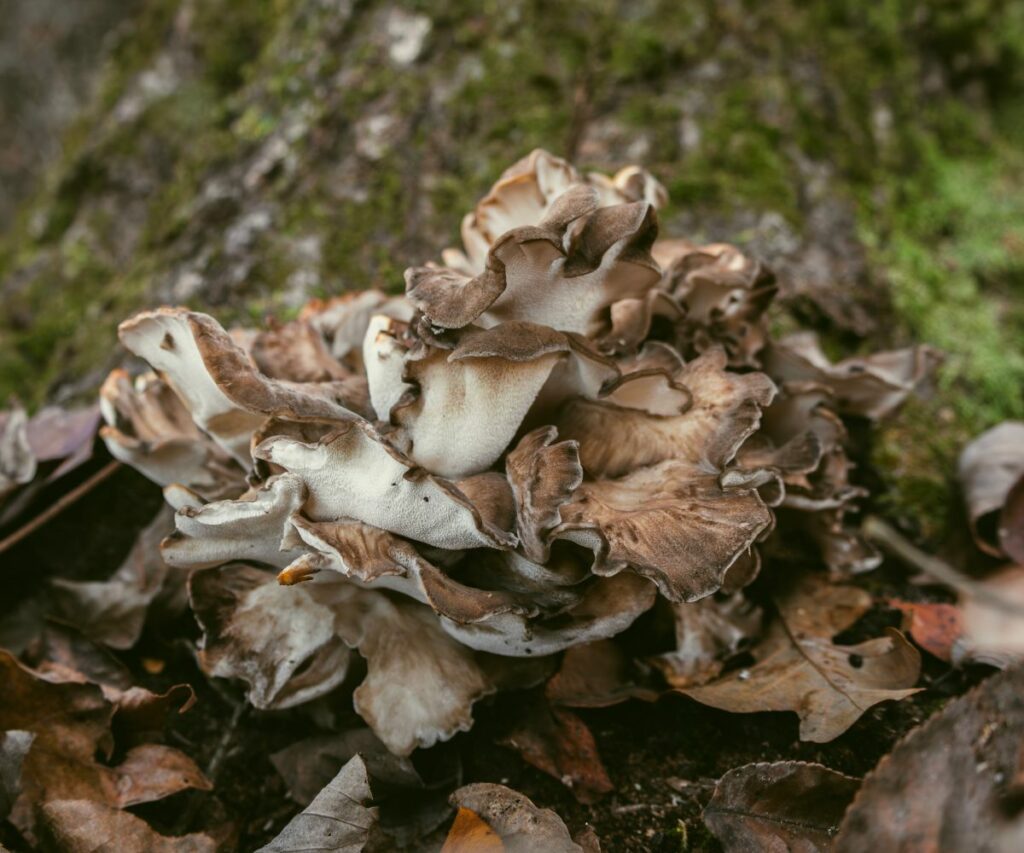
Maitake has a subtle smell compared to more fragrant edibles like lion’s mane or chanterelles. You won’t find them with your nose, and when you get up close to sniff them, they just smell shroomy. The scent is earthy and slightly bitter, like a dark beer. Once they go off, the smell becomes overwhelming and disgusting.
Many new foragers get confused by hen of the woods, thinking that it must taste like a hen. It would make sense, considering that chicken of the woods tastes like chicken — but it’s not true. This fungus is umami, a rich and meaty companion that makes a fantastic main. Sear it in hot oil or grill it for crispy edges.
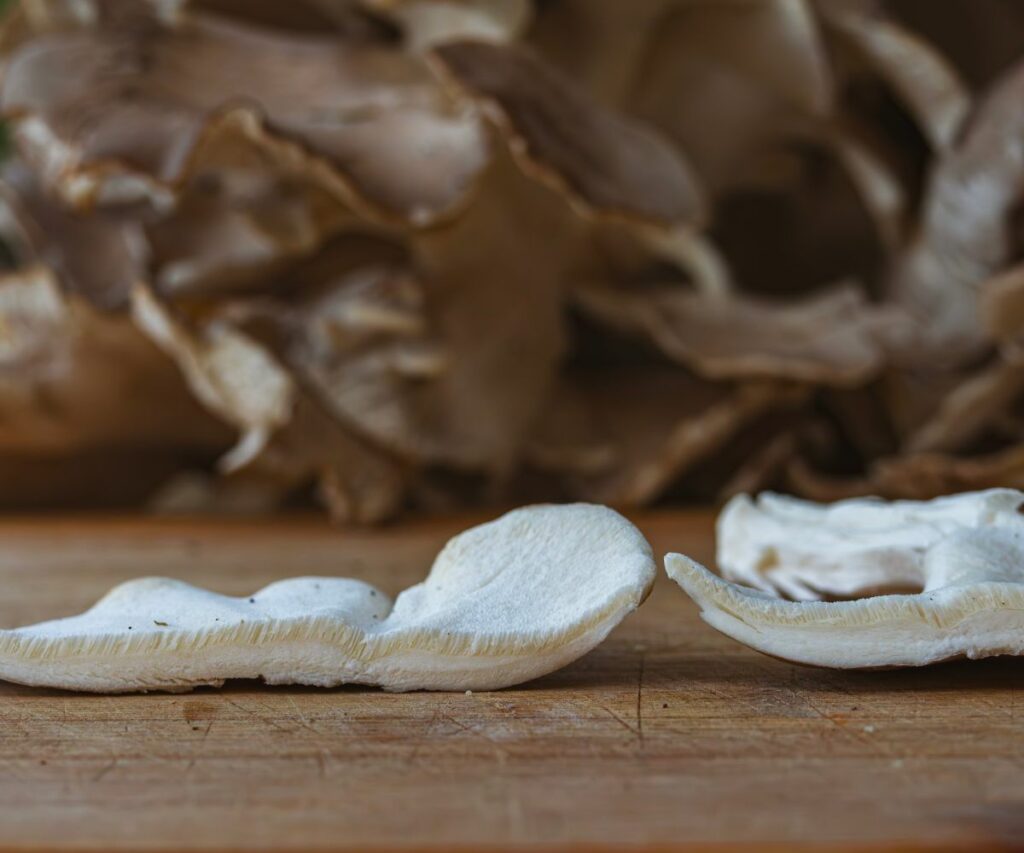
Maitake is a powerful flavoring agent that tastes stronger than it smells. It goes great in seasoning blends, and the tougher stalks make an excellent soup stock. Because of its large size, you’ll likely have maitake left over. Its texture and composition are similar to that of chicken of the woods, and you can use the same methods to preserve and store it.
Habitat
Maitake mushrooms are butt-rot fungi that populate old-growth forests in temperate climate zones throughout the US and worldwide. They are usually saprobic and do the good work of decomposing deadwood, but once in a while, they show a mean streak and decide to parasitize a living tree. They aren’t very good at it and are considered a weak parasite at best.
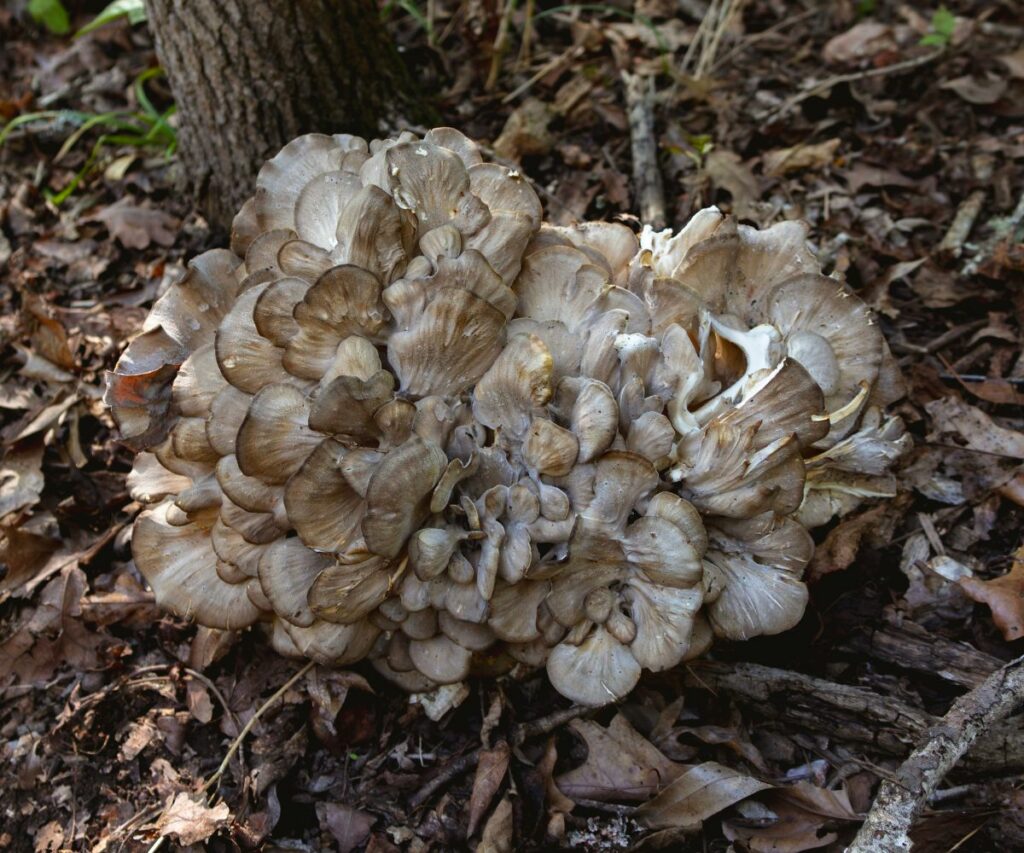
These mushrooms grow only with hardwoods and almost exclusively with oak, though beech, elm, and maple might also play host. They never grow directly from a tree’s bark. Instead, they populate the ground at the base of standing sick or deadwood. They may appear a few feet away from the tree, but make no mistake — they rely on its root system for sustenance.
It’s noteworthy that maitake mushrooms blend exceptionally well with their surroundings. They are often the same color as fallen autumn leaves, and searchers miss them easily. To avoid passing up perfectly good shrooms, look around from multiple vantage points to glimpse their pale underbellies.
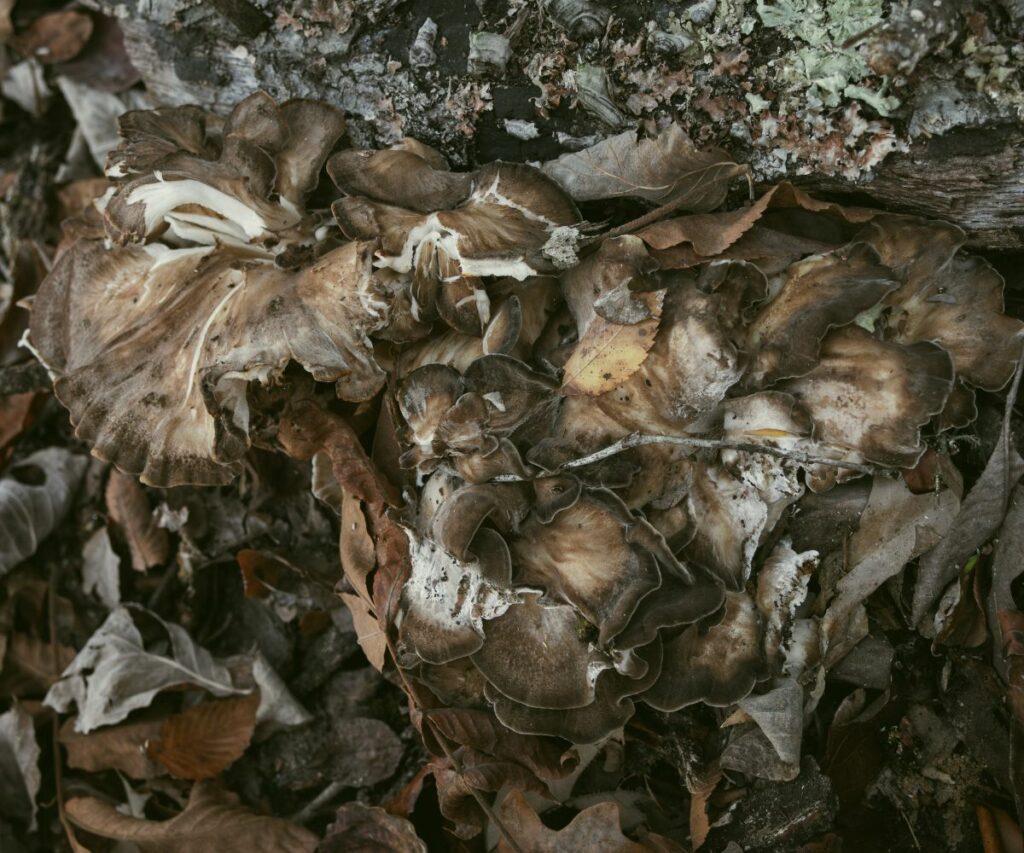
Season and Growth Habits
Maitake mushrooms appear anywhere from late summer to late autumn, depending on where you live. They usually pop up in August and last until November in my neck of the woods, though I occasionally see a straggler hanging around in December.
These fungi are pretty resilient. They are triggered into growth by the first cold nights of autumn and can withstand the first few frosts of winter, so the season tends to be longer. It also varies each year, with warmer weather extending the season.
When you find a maitake, keep your eyes peeled for another nearby. They drop spores in the same place yearly, which can lead to multiple rosettes growing very close to one another. It also leads to maitake mushrooms occupying the same place year after year. Once you find a flush, that’s your honey hole — pin it on your map, and don’t tell anyone where it is!
Maitake ID Check
- Brown, beige, grayish, or rosy caps
- Large, clustered rosette formation
- White pore surface
- Appearing in autumn or winter
- Growing from ground
- Growing near the base of oak or other hardwood
Identifying Common Look-Alikes
Maitake mushrooms have no toxic look-alikes. They do have some edible look-alikes, and it’s wise to distinguish these different fungi so you can cook them up according to the best practices for each one.
Black-Staining Polypore
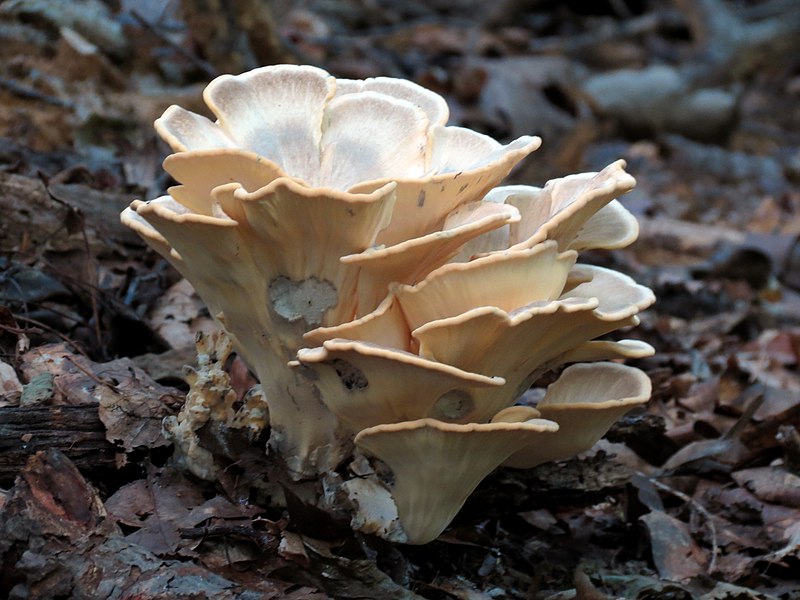
A dead-ringer for maitake, Meripilus sumstinei often confounds foragers on the hunt for hen. This butt-rot fungus appears in creamy, brown, or gray fronds. It favors the roots of hardwoods but occasionally populates Douglas fir. It usually appears earlier in the spring and summer but can pop up anytime conditions are favorable.
The two look nearly identical, but there are a few critical distinctions. Black-staining polypore caps are usually wavier and more leaf-like than hens, with less separation between individual caps. They often grow in upward-tipped rosettes, while maitake mushrooms grow in flatter rosettes. A black-staining polypore’s flesh is also thicker and meatier, especially when young.
However, the number one way to distinguish the two is to scrape the surface. The black-staining polypore will stain black when you scratch it. This can happen immediately or in about five minutes. If it doesn’t stain black, it isn’t a black-staining polypore — more likely, you’ve got genuine hen of the woods on your hands!
If you find it: Living up to its unimaginative name, black-staining polypore is edible but boring. Use specimens for soup stock or seasoning blends since they’re too tough to eat.
Umbrella Polypore
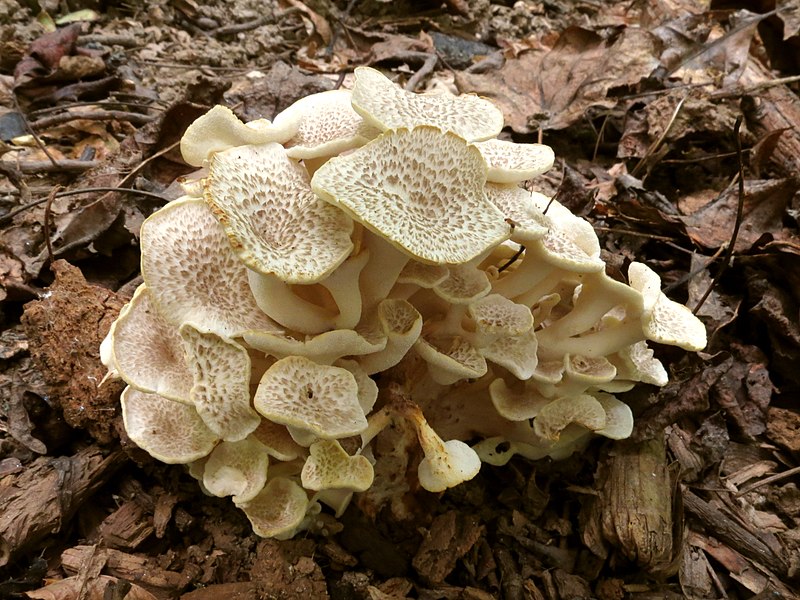
Known in the scientific community as Polyporus umbellatus, the umbrella polypore is another butt-rot fungus you might find on your forays. Umbrellas are much less common but visually quite similar to maitake mushrooms, with large clusters of creamy, brown, or grayish caps sprouting from the bases of dying hardwoods.
The umbrella polypore gets its name from a distinct, umbrella-like cap shape that peaks at the top and folds downward. There may be dozens of umbrella caps sprouting from a single basal stump, each usually indented in a modest funnel.
The caps flatten out with age and lose their umbrella-like properties. However, you can still use them as an identifying characteristic. While maitake mushrooms might appear to have conjoined fronds that run together, it is clear that umbrella caps are always separated.
If you find it: Harvest and cook it up! Umbrella polypores have delicate, tender flesh. Uneaten specimens can be tinctured for a variety of medicinal purposes.
Ready to get your hands on some maitake mushrooms? Now that you know how to identify these autumn treats, you’re ready to hit the trail and score yourself a delicious dinner. Don’t forget to do the mushroom dance in honor of your find!


Thanks for the information. Very useful, please keep them coming